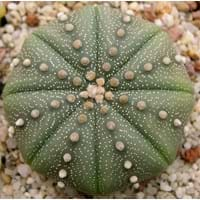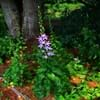Life Span
Perennial
Perennial
Type
Flowering Plants
Ornamental Plant
Origin
Asia, Europe
Not Available
Types
American Lily of the Valley, European Lily of the Valley, Japanese Lily of the valley.
Not Available
Number of Varieties
Not Available
Habitat
Banks, Broad-Leaved Forests, coppices, Dry and Young forest Heaths, Forest margins, Ridges, Rocky Ridges
Desert, Semi desert
USDA Hardiness Zone
4-8
12-15
Sunset Zone
A1, A2, A3, H1, H2, 1a, 1b, 2a, 2b, 3a, 3b, 4, 5, 6, 7, 14, 15, 16, 17, 18, 19, 20
21, 22, 23, 24
Habit
Mat-forming
Oval or Rounded
Flower Color
Pink, White
Yellow
Flower Color Modifier
Not Available
Not Available
Fruit Color
Not Available
Non Fruiting Plant
Leaf Color in Spring
Dark Green
Not Available
Leaf Color in Summer
Dark Green, Green
Not Available
Leaf Color in Fall
Green, Yellow green
Not Available
Leaf Color in Winter
Not Available
Not Available
Leaf Shape
Bell Shaped
Elliptic
Plant Season
Fall, Spring, Summer
Not Available
Sunlight
Part sun, Partial shade
Not Available
Growth Rate
Fast
Very Slow
Type of Soil
Moist, Well drained
Not Available
The pH of Soil
Acidic, Neutral
Not Available
Soil Drainage
Not Available
Not Available
Bloom Time
Late Spring, Spring
Spring
Repeat Bloomer
No
Not Available
Tolerances
Not Available
Not Available
Where to Plant?
Container, Ground, Pot
Container, Ground, Pot
How to Plant?
From Rhizomes, Seedlings
Cuttings, Stem Cutting
Plant Maintenance
Medium
Medium
Watering Requirements
Keep the ground moist but not water-logged, Requires a lot of watering, Water twice a day in the initial period, Water when soil is dry
Needs very little water
In Summer
Lots of watering
Lots of watering
In Spring
Moderate
Moderate
In Winter
Average Water
Average Water
Soil pH
Acidic, Neutral
Not Available
Soil Type
Moist, Well drained
Not Available
Soil Drainage Capacity
Not Available
Not Available
Sun Exposure
Part sun, Partial shade
Not Available
Pruning
Do not prune during shooting season, Prune after harvesting, Prune in late summer or fall, Prune to stimulate growth, Remove deadheads
Remove damaged leaves, Remove dead branches, Remove dead leaves
Fertilizers
All-Purpose Liquid Fertilizer
All-Purpose Liquid Fertilizer
Pests and Diseases
Anthracnose, Aureobasidium leaf spot, Foliar nematode, Leaf spot, Mealybugs, Rust, Southern blight
Mealy bugs
Plant Tolerance
Drought
Drought
Flowers
Yes
Not Available
Flower Petal Number
Not Available
Single
Edible Fruit
Not Available
No
Fragrant Fruit
Not Available
Not Available
Fragrant Leaf
Not Available
No
Fragrant Bark/Stem
No
Not Available
Showy Foliage
Yes
Not Available
Showy Bark
No
Not Available
Foliage Texture
Coarse
Bold
Foliage Sheen
Not Available
Not Available
Invasive
Sometimes
Not Available
Self-Sowing
Not Available
Not Available
Attracts
Bees
Hummingbirds
Allergy
Headache, Nausea, Vomiting
Not Available
Aesthetic Uses
Beautification, Showy Purposes
Showy Purposes
Beauty Benefits
Not Available
Not Available
Environmental Uses
Air purification
Air purification
Medicinal Uses
Chest pain, Swelling
No Medicinal Use
Part of Plant Used
Flowers, Leaves, Root
Not Available
Other Uses
Air freshner, Cosmetics, Oil is used for aromatherapy, Oil is used in perfume, soaps, creams, etc., Showy Purposes, Used As Food, Used as Ornamental plant, Used for fragrance
Not Available
Used As Indoor Plant
Yes
Yes
Used As Outdoor Plant
Yes
Yes
Garden Design
Bedding Plant, Bog Garden, Cutflower, Edging, Foundation, Mixed Border
Bedding Plant
Botanical Name
Convallaria majalis
Astrophytum myriostigma
Common Name
Lily of the Valley
Bishop's Cap Cactus, Bishop's Hat, Bishop's Miter Cactus ,Star Cactus
In Hindi
कामुदिनी
Star Cactus
In German
Maiglöckchen
Star Cactus
In French
Lily of the Valley
Star Cactus
In Spanish
Lirio de los valles
Star Cactus
In Greek
Κρίνος της κοιλάδας
Star Cactus
In Portuguese
Lírio do Vale
Star Cactus
In Polish
Lilia doliny
Star Cactus
In Latin
Lílium convállium
Star Cactus
Phylum
Tracheophyta
Magnoliophyta
Class
Magnoliopsida
Magnoliopsida
Order
Asparagales
Caryophyllales
Family
Asparagaceae
Cactaceae
Genus
Convallaria
Astrophytum
Clade
Angiosperms, Monocots
Angiosperms, Core eudicots, Eudicots
Tribe
Not Available
Cacteae
Subfamily
Nolinoideae
Cactoideae
Number of Species
Not Available
Difference Between Lily of the Valley and Bishop's Cap Cactus
If you are confused whether Lily of the Valley or Bishop's Cap Cactus are same, here are some features about those plants to help you choose better. Many people think that these two plants have the same characteristics, but one can see Lily of the Valley and Bishop's Cap Cactus Information and learn more about it. Fertilizers required for proper growth of Lily of the Valley are All-Purpose Liquid Fertilizer, whereas for Bishop's Cap Cactus fertilizers required are All-Purpose Liquid Fertilizer. Hence, one should know the basic difference between Lily of the Valley and Bishop's Cap Cactus if you are planning to have them in your garden to enhance its beauty.
<
Flowering PlantsImportance of Lily of the Valley and Bishop's Cap Cactus
Want to have the most appropriate plant for your garden? You might want to know the importance of Lily of the Valley and Bishop's Cap Cactus. Basically, these two plants vary in many aspects. Compare Lily of the Valley and Bishop's Cap Cactus as they differ in many characteristics such as their life, care, benefits, facts, etc. Every gardener must at least have the slightest clue about the plants he wants to plant in his garden. Compare their benefits, which differ in many ways like facts and uses. The medicinal use of Lily of the Valley is Chest pain and Swelling whereas of Bishop's Cap Cactus is No Medicinal Use. Lily of the Valley has beauty benefits as follows: Not Available while Bishop's Cap Cactus has beauty benefits as follows: Not Available.
Compare Facts of Lily of the Valley vs Bishop's Cap Cactus
How to choose the best garden plant for your garden depending upon its facts? Here garden plant comparison will help you to solve this query. Compare the facts of Lily of the Valley vs Bishop's Cap Cactus and know which one to choose. As garden plants have benefits and other uses, allergy is also a major drawback of plants for some people. Allergic reactions of Lily of the Valley are Headache, Nausea and Vomiting whereas of Bishop's Cap Cactus have Not Available respectively. Having a fruit bearing plant in your garden can be a plus point of your garden. Lily of the Valley has showy fruits and Bishop's Cap Cactus has no showy fruits. Also Lily of the Valley is flowering and Bishop's Cap Cactus is not flowering . You can compare Lily of the Valley and Bishop's Cap Cactus facts and facts of other plants too.





